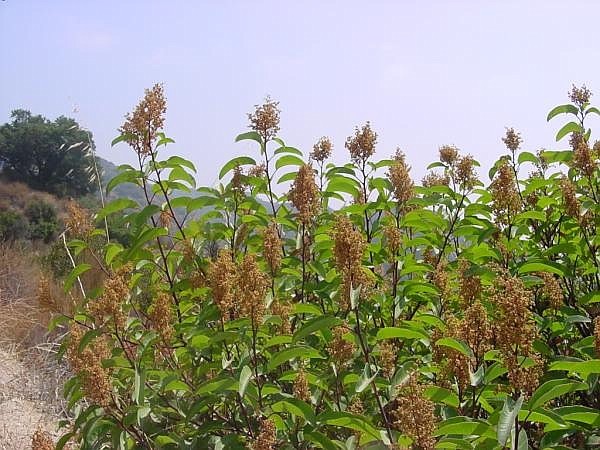 Facebook
Facebook
 X
X
 Instagram
Instagram
 TikTok
TikTok
 Youtube
Youtube

Lupines, whose spiky, purple (sometimes yellow) flower clusters adorn grassy areas and disturbed patches of soil, are beginning to pop up all over San Diego County. If desert rainfall cooperates, you’ll spot lupines along the sandy washes or in roadside gullies where water temporarily collects. Coastal lupines should be in full flower by late March. Higher-elevation lupines will be blooming in the mountain areas in May and early June. The generic name Lupinus, meaning “wolf,” was given these plants in the belief that they robbed the soil of nutrients. Actually the reverse is true: Their ability to fix nitrogen through root nodules helps them survive on poor soils and may, in fact, enrich the soil around them.

The Frost-Nipped Legacies of the past winter’s cold spells might not be hard to spot in February, especially in the inland areas where overnight lows dipped to below freezing. Look for brown lawns, half-dead-looking avocado trees, and wilted ornamental plants like poinsettias. One common frost-sensitive native plant, the laurel sumac, is responsive of the reach of cold air. Laurel sumac is often the largest and most conspicuous plant growing within the coastal sagescrub type of vegetation native to San Diego’s undisturbed canyon hillsides. Wherever freezing-cold air has sunk into low lying canyons and basins, laurel sumac bushes tell the story by appearing brown and withered a few weeks later.
Sirius the Dog Star blazes in the southeast after dinnertime, the brightest star of Canis Major. In a dark sky with lots of stars in view, the constellation’s points can be connected to form a convincing dog profile. He’s currently standing on his hind legs. Sirius is on his chest, to the right or lower right of his faint, triangular head.
The above comes from the Outdoors listings in the Reader compiled by Jerry Schad, author of Afoot & Afield in San Diego County. Schad died in 2011. Planet information from SkyandTelescope.org.


Lupines, whose spiky, purple (sometimes yellow) flower clusters adorn grassy areas and disturbed patches of soil, are beginning to pop up all over San Diego County. If desert rainfall cooperates, you’ll spot lupines along the sandy washes or in roadside gullies where water temporarily collects. Coastal lupines should be in full flower by late March. Higher-elevation lupines will be blooming in the mountain areas in May and early June. The generic name Lupinus, meaning “wolf,” was given these plants in the belief that they robbed the soil of nutrients. Actually the reverse is true: Their ability to fix nitrogen through root nodules helps them survive on poor soils and may, in fact, enrich the soil around them.

The Frost-Nipped Legacies of the past winter’s cold spells might not be hard to spot in February, especially in the inland areas where overnight lows dipped to below freezing. Look for brown lawns, half-dead-looking avocado trees, and wilted ornamental plants like poinsettias. One common frost-sensitive native plant, the laurel sumac, is responsive of the reach of cold air. Laurel sumac is often the largest and most conspicuous plant growing within the coastal sagescrub type of vegetation native to San Diego’s undisturbed canyon hillsides. Wherever freezing-cold air has sunk into low lying canyons and basins, laurel sumac bushes tell the story by appearing brown and withered a few weeks later.
Sirius the Dog Star blazes in the southeast after dinnertime, the brightest star of Canis Major. In a dark sky with lots of stars in view, the constellation’s points can be connected to form a convincing dog profile. He’s currently standing on his hind legs. Sirius is on his chest, to the right or lower right of his faint, triangular head.
The above comes from the Outdoors listings in the Reader compiled by Jerry Schad, author of Afoot & Afield in San Diego County. Schad died in 2011. Planet information from SkyandTelescope.org.
Comments